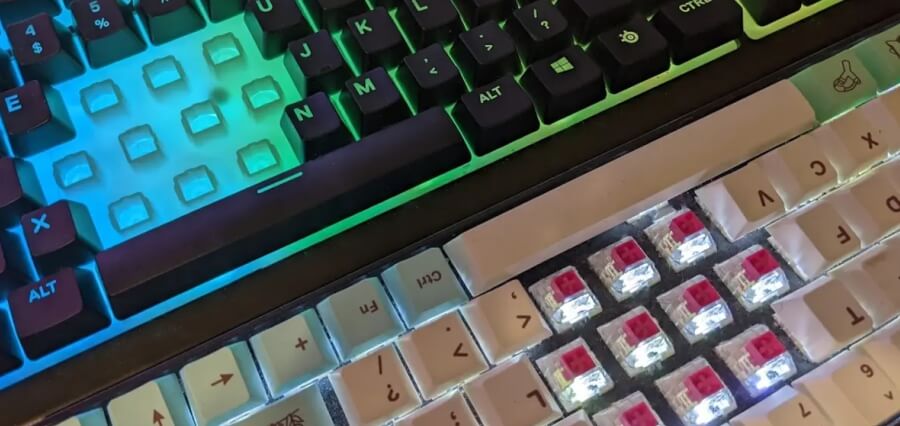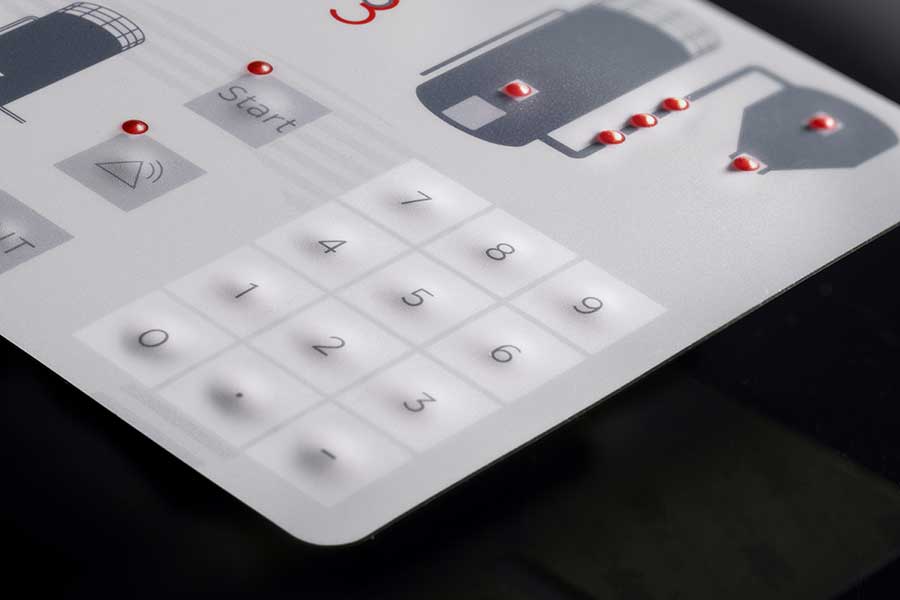Trick Advantages of Using a Membrane Switch in Industrial Applications
Trick Advantages of Using a Membrane Switch in Industrial Applications
Blog Article
Just How Membrane Layer Changes Add To the Toughness of Electronic Control Panels
Membrane layer switches play a critical duty in improving the toughness of electronic control panels, primarily through their multi-layered building which supplies effective security against environmental variables such as dampness and dust. The lack of relocating parts significantly lowers the probability of mechanical failures, making membrane layer changes ideal for requiring applications.
Interpretation of Membrane Buttons

Membrane layer buttons are designed to be slim and light-weight, making them suitable for applications where area is limited. They can be made in numerous forms, sizes, and colors, supplying flexibility in layout that satisfies visual and practical demands. Additionally, membrane switches can incorporate different modern technologies, such as responsive feedback and LED signs, improving customer experience.
As a result of their building and construction, membrane layer buttons are typically immune to dirt, dampness, and basic wear, adding to their durability in demanding atmospheres. Their seamless style not only helps with easy cleaning however likewise lessens the danger of mechanical failure, making them a preferred choice for makers looking for trusted interface in their digital control board.
Security Against Environmental Variables
The layout of membrane changes naturally provides a level of defense versus numerous ecological factors, which is important for maintaining capability in tough conditions - Membrane Switch. These switches are typically constructed with layers of flexible products that protect internal parts from wetness, dirt, and contaminants. By enveloping the circuitry, membrane switches over reduce the risk of brief circuits and rust, which can dramatically hinder performance
Additionally, making use of durable adhesives and sealers during manufacturing improves their resistance to ecological difficulties. Membrane layer switches can endure direct exposure to chemicals and solvents, making them suitable for sectors such as food processing and medical care, where health and cleanliness are paramount. Their smooth surface area style also protects against the build-up of dust and bacteria, facilitating much easier cleansing and upkeep.
Temperature level variations are one more environmental worry, and membrane layer buttons are engineered to operate efficiently throughout a large range of temperatures (Membrane Switch). This versatility makes certain that control panels stay functional in various setups, from commercial atmospheres to customer electronics
Effect On User Communication
Individual interaction with electronic control board is significantly influenced by the style and performance of membrane layer buttons. These switches offer a responsive interface that improves the overall customer experience, enabling instinctive navigation and control. Their receptive original site nature makes certain that individuals obtain instant responses upon activation, which is crucial for jobs calling for accuracy and performance.
Moreover, the smooth surface of membrane switches assists in very easy cleansing and upkeep, advertising individual confidence in the integrity of the user interface. This sanitation is specifically vital in environments where health is critical, such as medical or food processing settings. In addition, the portable and lightweight style of membrane layer changes adds to the aesthetic appeal of control panels, motivating individual engagement via a modern and sleek appearance.
Moreover, the assimilation of aesthetic aspects, such as printed symbols and backlighting, assists individuals swiftly recognize functions, decreasing the discovering curve related to brand-new devices. Therefore, users can operate gadgets a lot more properly, causing raised productivity and complete satisfaction. In summary, membrane switches play a pivotal function in improving user interaction by combining functionality, visual appeals, and convenience of use, ultimately resulting in enhanced operational performance.
Layout Flexibility and Customization
Style versatility and personalization are vital facets of membrane layer switches, making it possible for manufacturers to tailor digital control board to particular applications and customer needs. This flexibility permits the integration of various design components, such as shades, graphics, and appearances, which can boost the visual appeal and user involvement of the control panel.
Membrane switches can be customized in shapes and Our site size, fitting a wide variety of gadgets and applications, from industrial equipment to customer electronic devices. This convenience ensures that makers can develop instinctive user interfaces that align with user assumptions and operational needs. In addition, the capability to include unique features such as backlighting or responsive feedback better boosts usability, permitting a more interactive experience.
Additionally, the production procedure for membrane layer switches supports the rapid prototyping of designs, enabling producers to repeat and refine their ideas rapidly. This capability not only accelerates the growth timeline but additionally guarantees that the last item meets certain functional and aesthetic criteria.

Cost-Effectiveness and Longevity
Cost-effectiveness and long life are significant advantages of membrane buttons, making them an attractive choice for manufacturers and end-users alike. These switches are typically much less costly to create than traditional mechanical buttons, primarily due to their simplified manufacturing procedures and the reduced variety of parts called for. This expense advantage prolongs not only to first production yet also to lasting functional expenses, as membrane layer buttons typically need much less upkeep and have a reduced failure rate.
Furthermore, the long life of membrane changes contributes to their total worth. Constructed from resilient products, they are resistant Click This Link to environmental factors such as dampness, dirt, and chemicals, which can cause early wear in various other switch kinds. The absence of moving components reduces mechanical failure, permitting membrane layer switches to maintain capability over prolonged durations.
This longevity is especially beneficial in applications requiring regular performance under demanding conditions, such as clinical tools and commercial equipment. Eventually, the combination of cost-effectiveness and durability makes membrane changes a financially feasible choice for producers, offering reliable remedies that withstand the test of time while enhancing financial considerations.
Conclusion
In verdict, membrane switches considerably enhance the resilience of digital control panels with their durable building and safety features. By efficiently shielding wiring from ecological hazards and decreasing the risk of mechanical failure, these buttons guarantee constant performance popular applications. The seamless design advertises hygiene and ease of maintenance, while modification choices make it possible for customized services for different demands. On the whole, membrane layer changes stand for a reliable and cost-effective selection for improving the long life and functionality of electronic control systems.
Report this page